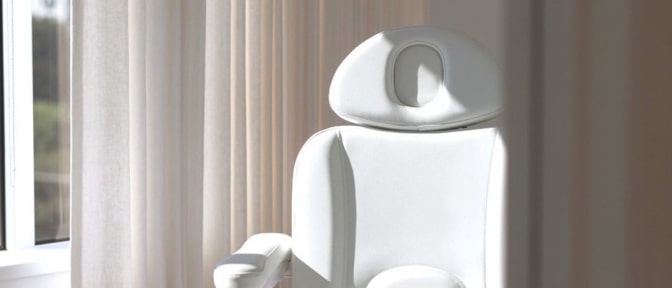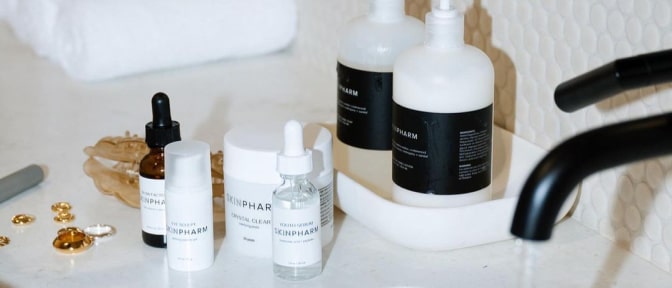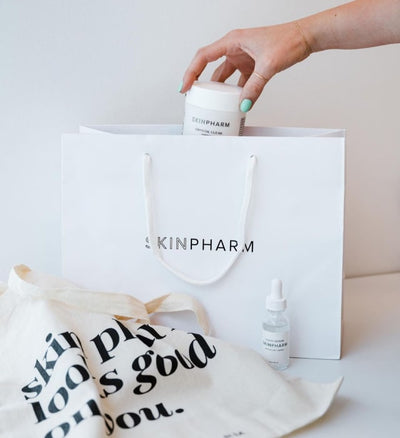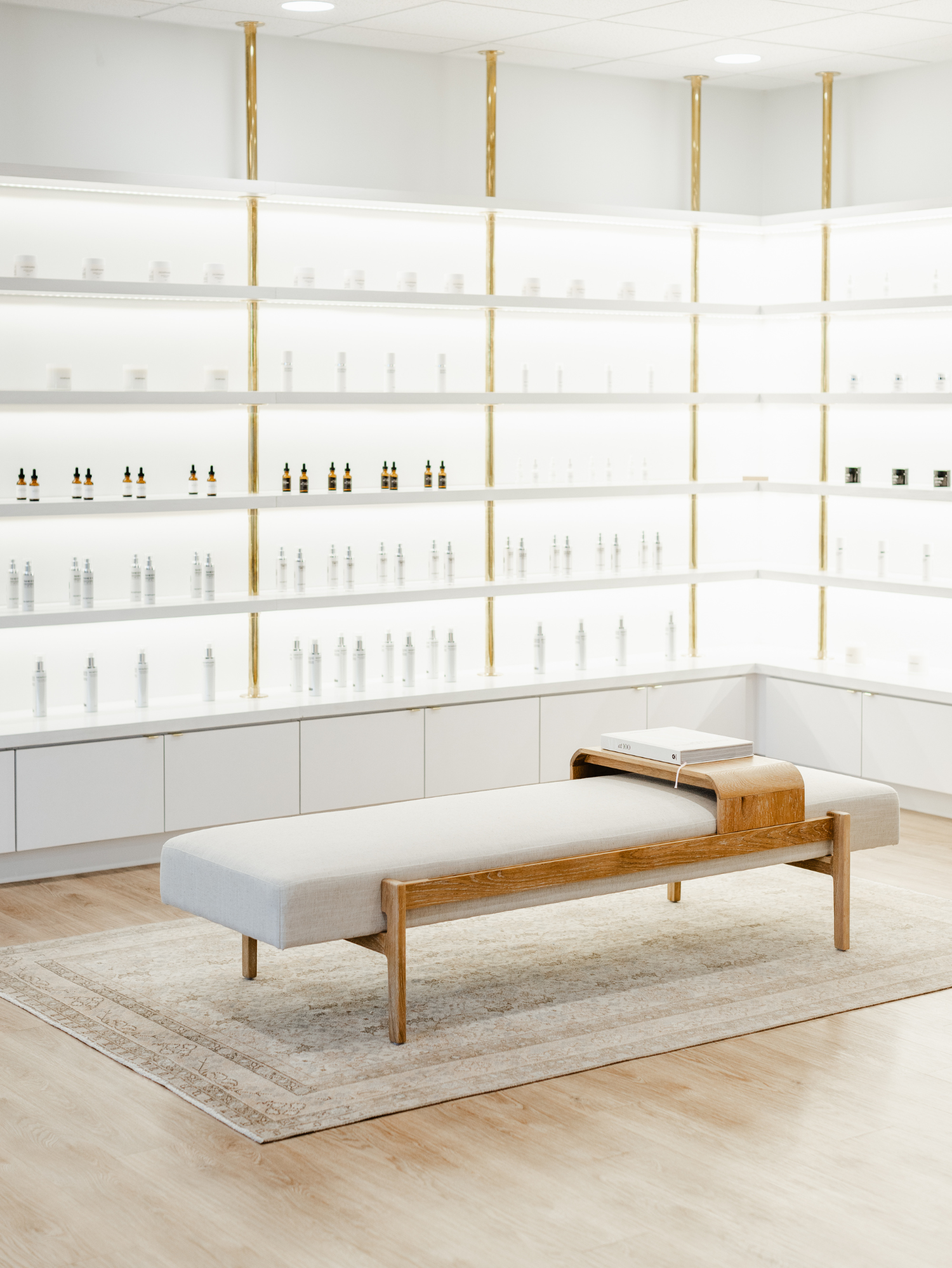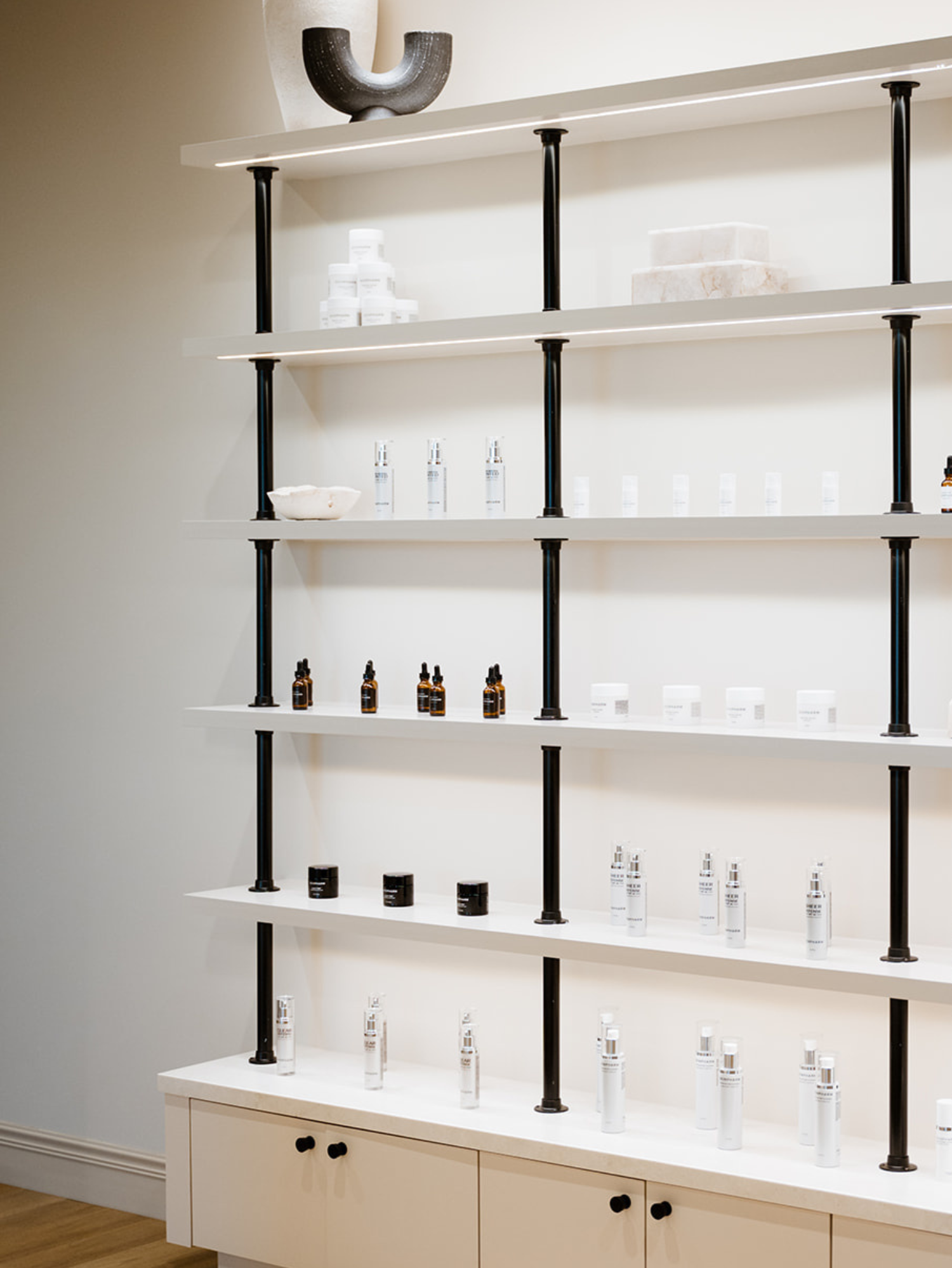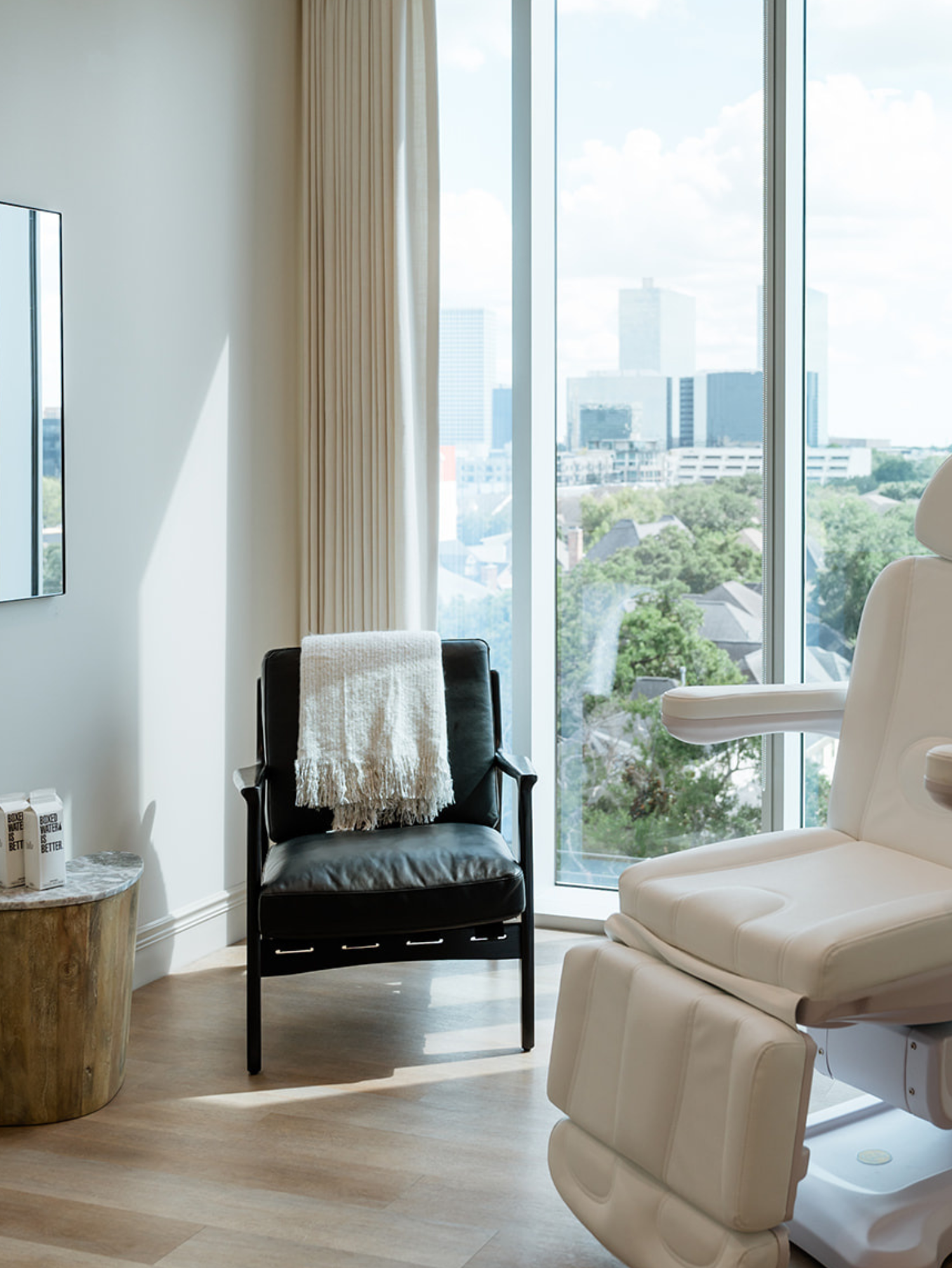Shop skin care
Clinics
VISIT OUR 9 CLINICS →
HOURS
Monday – Friday
9:30a – 5:30p
Glycolic Acid vs. Salicylic Acid: How to Achieve the Best Results

If you’ve been wanting to add an exfoliant into your existing skin care routine, you’ve probably been seeing the same two ingredients in every product you’ve looked at.
When it comes to glycolic acid vs. salicylic acid, there really is no true winner.
It all comes down to your specific, uniquely beautiful skin – and what each of those ingredients can do for you. To help you decide, the Skin Pharm team created a primer on both, including how you may be able to use each ingredient in your own routine to achieve the best results.
Glycolic acid basics
First up in the glycolic acid vs. salicylic acid debate is glycolic acid.
Glycolic acid is considered an alpha-hydroxy acid, more commonly referred to as an AHA.
Alpha-hydroxy acids are water-soluble, meaning that they dissolve best in the presence of water. They are found in nature, specifically in products like sugarcane, but most of the AHAs in products were produced in a laboratory setting.
What makes glycolic acid so effective is that it has a smaller molecular shape, which allows it to pass the skin barrier and penetrate more deeply into your skin. Products with glycolic acid are applied topically, usually after cleansing the face.
As it touches the skin, glycolic acid is able to begin to dissolve the bond between the dead skin cells present on the outer layer (the epidermis). With fewer dead skin cells to fight through, the skin can quickly turn over and reveal youthful, more radiant skin. This is why your skin often feels so soft to the touch after using them.
Here are a few other benefits of using glycolic acid vs. salicylic acid in your skin care routine:
- Evens out the skin tone
- Reduces hyperpigmentation (dark spots)
- Reduces the visible signs of aging (fine lines and wrinkles, sagging skin, etc.)
- Brightens the complexion
In addition to helping to produce newer, more youthful skin cells, glycolic acid can also help decrease redness and swelling and the bacteria that may cause acne.
Salicylic acid basics
Salicylic acid, on the other hand, falls in the beta-hydroxy acid category. As opposed to AHAs, BHAs (as they’re commonly known) are oil-soluble. Like AHAs, BHAs are also found in nature, coming from willow bark, but are more likely to be created in a lab for use in skin care products.
It is used as an exfoliant in most of the same ways as glycolic acid. However, because salicylic acid is oil-soluble, it can effectively dissolve the oil (sebum) and reduce production. Because it doesn’t have to fight against the oil as the water-soluble glycolic acid does, salicylic acid is exceptionally good at getting even further into the pores and helps unclog them.
This ability is known technically as a keratolytic agent, meaning it works to soften the keratin — the main protein that makes up the skin and our hair and nails. It also can help provide the following benefits:
- Unclogs pores to help reduce the frequency of breakouts
- Smooths the skin’s surface
- Controls oily skin
- Reduces the appearance of both blackheads and whiteheads
- Can decrease the size and visibility of pores
Glycolic acid vs. salicylic acid: who should use which?
In addition to looking at the potential benefits of each, are there specific skin types that would do better with glycolic acid vs. salicylic acid? The answer is yes.
Each product has its own set of benefits and is naturally better for certain types of skin. Just remember that many skin care ingredients and products tend to be fairly trial-and-error, so don’t feel bad about trying something out to see how it will perform with your unique skin.
WHO BENEFITS MOST FROM GLYCOLIC ACID?
Suppose you’re looking for an exfoliant to help you deal with mild hyperpigmentation, including age spots and melasma, and are looking for a way to even out skin tone or reduce the appearance of fine lines. In that case, glycolic acid may be the way to go.
Glycolic acid is also a frequent ingredient in skin peels, whether performed at a dermatologist or at home. This is due to their ability to use their smaller size to get deep into the pores. However, this same benefit can also cause additional irritation in people with more sensitive skin, so use with caution.
There are plenty of different ways that you can incorporate glycolic acid products. Cleansers, toners, masks and serums are all just as likely to include it as a main ingredient.
WHO BENEFITS MOST FROM SALICYLIC ACID?
People with combination or naturally oily skin may prefer using salicylic acid to help reach their goals. It is particularly good at helping to manage acne. Salicylic acid is also great at reducing visible signs of sun damage and may be better for those with more sensitive skin, including people who have rosacea or other skin conditions.
On the other hand, people with dry skin may find that salicylic acid products are too harsh on their skin and can dry it out even further.
Many people forget that our skin’s natural oils, although they can be a problem in some, are also an essential part of our moisture barrier. Removing too much of that oil, especially if your skin is dry in the first place, can lead to issues.
Salicylic acid products also come in many different varieties, like cleansers, toners, and face masks. That allows you to choose the right products for your needs and how you want to incorporate them into your routine.
WHAT ABOUT USING THEM TOGETHER?
With glycolic acid vs. salicylic acid, it isn’t a one or the other situation. There are plenty of products out there, like our Crystal Clear clarifying pads, that utilize the specific benefits of both ingredients to create a single, even more effective product.
Unlike many other skin care ingredients out there, like lactic acid and retinol, glycolic acid and salicylic acid play well together. However, because you are using twice the active exfoliating ingredients, it’s even more important to start slow and pay attention to any sensitivity that may occur.
A general reminder about using chemical exfoliants
In the battle of glycolic acid vs. salicylic acid, one thing is the same across the board… the need for sunscreen. No matter which you choose, chemical exfoliants make your skin even more vulnerable to the ultraviolet rays from the sun.
Because using them has the potential to damage your skin barrier, especially if you’re not appropriately hydrating the skin with a supportive moisturizer, you are even more at risk of getting sunburnt.
The problem with sunburns isn’t the immediate discomfort, although that can be a factor. The issue is more with the long-term consequences of chronic sun exposure, including premature aging, an increased risk of harmful skin conditions and hyperpigmentation.
The good news is, preventing that is as easy as knowing what sunscreen to look for. In general, a sunscreen with at least 30 SPF, is broad-spectrum (protects against UVA and UVB radiation) and is water-resistant.
Just make sure that you’re also reapplying frequently to keep up the protection the entire time you’re under the sun.
Also, as we just briefly touched out, exfoliants of any kind tend to dry out your skin and create some tightness and irritation when you first start to use them. Make sure to focus on using a moisturizer at least twice a day – yes, even if you have naturally oily skin – and pay close attention to what your skin is telling you.
If the flaking and irritation get too intense, it’s a good idea to take a break and let your skin’s moisture barrier rebuild itself before trying again. Start slow and increase the frequency of either AHAs or BHAs as your skin starts to adjust. And did we already say moisturize?
To sum everything up...
It isn’t a matter of glycolic acid vs. salicylic acid, because each has its own unique benefits to bring to the table.
Choosing the right product for you, or even one that combines both ingredients into a single product (like some of the skin care products we offer here at Skin Pharm), can allow you to customize and create your perfect skin care routine. That way, you can reveal the skin that you’ve always wanted!
SOURCES:
Salicylic acid treats acne vulgaris by suppressing the AMPK/SREBP1 pathway in sebocytes | PubMed
